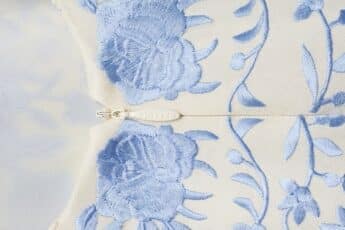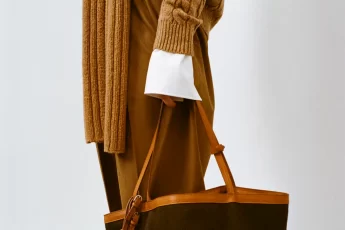Sustainable fashion isn’t just a buzzword anymore. It’s a shift in mindset, and it starts with knowing the impact your wardrobe has on the planet. We’ve all seen the effects of fast fashion: cheap materials, questionable practices, and a whole lot of waste. So if you’re looking to clean up your closet and make more sustainable choices in fashion, you’ve already taken the first step.
Next time you have the desire to buy a new piece of clothes you should ask yourselft questions like: Who made this? What’s it made of? Will it last? That kind of awareness gives you the power to shop in a way that actually supports the planet instead of polluting it. And, it doesn’t mean you have to sacrifice style or spend a fortune. From eco-friendly fabrics to brands doing fashion the right way, there are so many smart, stylish options out there to make the swap.
30 Wear Rule
Consider the 30-Wear Rule as a guiding principle. If an item doesn’t inspire you to wear it at least 30 times, is it worth the purchase? This rule can deter you from making impulsive purchases that might contribute to your wasteful consumption, making it less sustainable. It’s not about restriction but about making your fashion choices more meaningful and impactful. Even if you sell it, is it worth buying in the first place? If you can’t see yourself wearing it 30 times, consider if you really want or need it.
Lab Grown Diamonds
Lab-grown diamonds are more ethical than mined diamonds, which are extremely resource—and labor-intensive and can have a significant impact on the environment during sourcing and production.
As a consumer, you can buy lab-grown diamonds from the best place to buy diamonds so you can avoid making the issue more prevalent, do something that supports less diamond mining, and avoid accidentally purchasing good diamonds.
Repair, Don’t Replace
Before you toss that jacket with the loose button or those jeans —pause. Giving your clothes a second life through simple repairs it’s a great step toward sustainability. In a world obsessed with the coolest new things, repairing what you already own is a conscious way against waste. Plus, it makes the pieces you do own feel more personal and loved. A stitch here, a patch there—it all adds up.
And here’s the thing: tossing out clothes isn’t as harmless as it seems. Natural fibers may break down over time, but synthetics? Not so much. Polyester, for example, can take over 200 years to decompose. That’s generations of waste sitting in landfills.
So instead of replacing, consider repairing. Or better yet—upcycle it. That old shirt? Could be your next DIY crop top. Those worn jeans? Distressed is always in…
Preloved Fashion
Buying preloved or selling pieces you no longer wear is one of the easiest—and most stylish—ways to extend the life of clothing and accessories. We love snagging a bargain but also reducing waste, and stepping away from the never-ending cycle of fast fashion.
Shopping preloved means discovering unique, often high-quality gems that you won’t find on every high street rack. Whether it’s a vintage leather jacket or a designer bag at a fraction of the cost, you’re adding character to your closet while giving each item another shot at life.
And remember, sustainability doesn’t have to come with a luxury price tag. Choosing pieces with intention. Asking do I really need this? before you buy. Because every mindful purchase is a quiet move toward a more conscious closet.
You’ll also like this:
Top 8 Most Comfortable Leggings for Everyday Wear
How to Instantly Elevate Your Personal Style









Leave a Comment